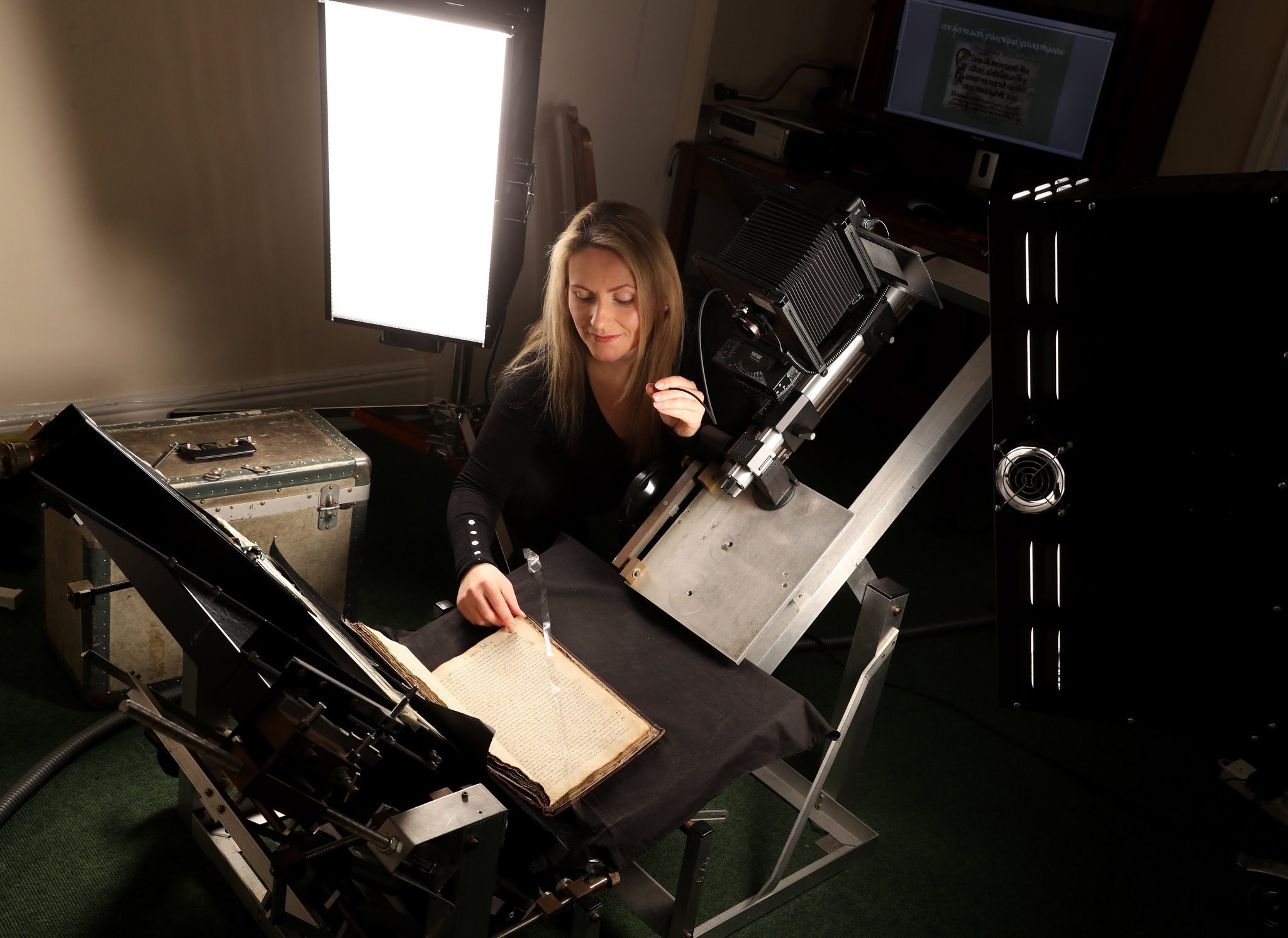About
Introduction
Irish Script on Screen (ISOS) is a project of the School of Celtic Studies, Dublin Institute for Advanced Studies.
The project is funded by the Dublin Institute for Advanced Studies.
The object of ISOS is to create digital images of Irish manuscripts, and to make these images — together with relevant commentary — accessible on a WWW site. The purpose of such a site is to provide an electronic resource which will:
- provide exposure on the internet for a vital part of Ireland's cultural heritage.
- place these primary materials at the disposal of scholars and students.
- contribute to the conservation of these valuable books and documents by creating images of high-resolution detail which, generally speaking, will reduce the need to handle the artefacts themselves.
History of ISOS
The Irish Script on Screen project was launched in 1999, directed by Pádraig Ó Macháin until 2012. It has since then been under the direction of Anne Marie O’Brien. In its early years it operated in collaboration with the School of Computer Applications at Dublin City University. In addition to contributing to the funding of the project, DCU, under the supervision of Professor Alan Smeaton, provided the necessary technical expertise in digital processing and storage.
The project has also benefitted from the generosity of the Irish Heritage Council.
Over the years many talented people have worked with us on the digitisation and processing of images of Irish manuscripts: Catherine Moran, Criostaí Mac Íomhaire, Evan Lloyd, David Cooper, Máire Casey, Georgina Gaughan, Colin Dunn, John O'Brien, and currently Anne Marie O’Brien.
Dublin core metadata collection by Andrea O'Reilly, Emmet Barra, Medb Ruane, Eibhlín Ní Chearbhaill, Kathryn McKee (Southampton Psalter).
Since 2004, Irish Script on Screen has operated solely as a project of the Dublin Institute for Advanced Studies.
Technical information
Each manuscript page is photographed using a large format 5/4 Sinar camera with Phase One IQ180 digital back. Both the camera and manuscript are positioned on a non-intrusive capture mechanism called a Grazer conservation graded, book cradle. Sensitivity to the fragile nature of the manuscripts is paramount to the project. Prior to digitisation the manuscript is examined and assessed in order to determine what precautions might be necessary during image-capture. The cradle is used to fully support the manuscript at all times so that no undue stress is placed on the spine.
Manuscripts are scanned at a resolution of at least 600dpi. The digital images are generated in a lossless TIFF file format to give the highest quality image. These images can vary in size depending on the physical size of the manuscript page, frequently generating files in excess of 500MB.
PhotoShop is used to process all images after they have been photographed. This software is used to crop the image to an optimum canvas size and superimposes a text header and footer to distinguish each page. A ruler is also placed alongside each image to indicate scale. Digital enhancement does not form part of the remit of the project.
The separate unprocessed TIFFs form the digital archive of each manuscript. A number of copies of these are then stored and maintained in different locations for security purposes.
Website re-development
The Irish Script on Screen website was developed in 1999 through a mainly HTML flat platform. This web platform used frames to allow the user to move through content. Although it was a durable infrastructure with little downtime it lacked any user capabilities, resulting in a flat static site.
In 2019 ISOS was considered for redevelopment. A new site was needed that would allow better discovery and reuse of data.
The redesign included :
- To modernize the design of all pages.
- Use the latest international standards for delivering high-quality digital images over the internet through IIIF (International Image Interoperability Framework).
- New search feature.
- New functions for users to the ISOS site.
- Allow all high resolution images to be made accessible.
- To give viewers a new zooming feature.
- Allow interoperability with different collections on ISOS and with other IIIF compliant digital collections.
- Optimizing handling with different technological devices, tablets/phones etc.
- Start a pilot Dublin Core meta data schema.
The web restructuring was completed in 2022 with the help of Andrew McCarthy and Anne Marie O'Brien. It will be continually updated and maintained.

